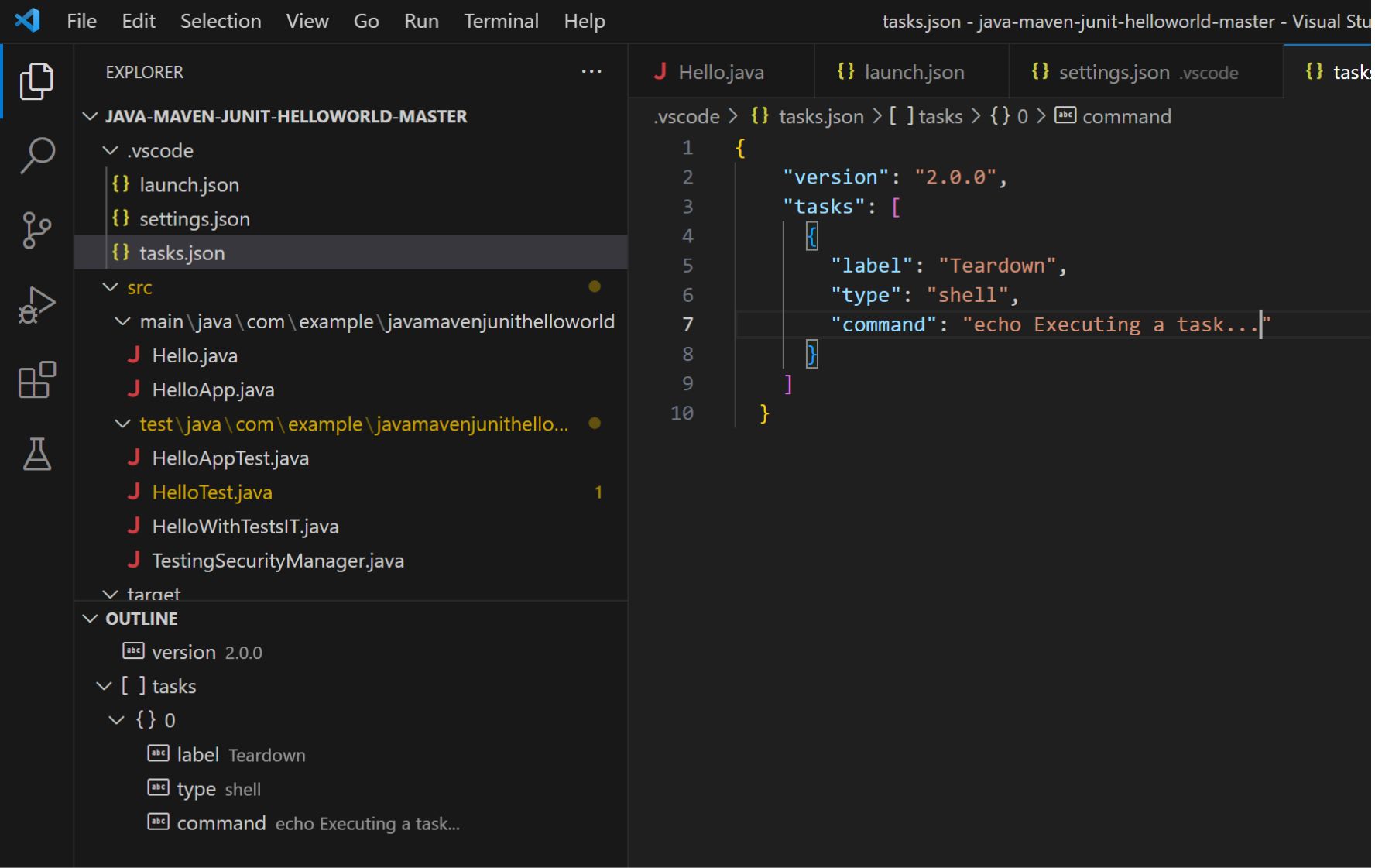Introduction
Coding is a vast and dynamic field, full of various terminologies that may seem overwhelming to newcomers. One such term that is frequently used in coding is “Mod.” Whether you’re a beginner or an experienced programmer, understanding what “Mod” means and how it is used in coding is crucial.
In coding, “Mod” is short for “modulo,” which is a mathematical operation that calculates the remainder when one number is divided by another. The Mod operator, represented by the symbol “%”, is commonly used in programming languages to perform this operation.
But why is Mod important in coding? Well, it offers several benefits and can be used in a variety of applications. From ensuring correct indexing in arrays to implementing cyclic patterns and performing conditional checks, Mod plays a significant role in making programs more efficient and versatile.
In this article, we will explore what Mod means in coding, how it works, and its common uses. We will also provide examples to illustrate these concepts, discuss the advantages and disadvantages of using Mod, and ultimately equip you with the knowledge to utilize Mod effectively in your coding endeavors.
So, let’s dive into the world of Mod and discover how it can simplify and enhance your coding experience.
Definition of Mod
To understand the concept of Mod in coding, it’s essential to grasp its definition. As mentioned earlier, “Mod” is short for “modulo,” which is a mathematical operation that calculates the remainder when one number is divided by another.
Mathematically, the modulo operation can be expressed as:
n % m = r
Here, “n” is the dividend, “m” is the divisor, and “r” is the remainder. The Mod operator (%) is used to perform this operation in programming languages.
The Mod operation is particularly useful when dealing with situations where we need to cyclically repeat a sequence of numbers or perform calculations based on remainders.
In coding, Mod allows us to work with the remainder of a division operation efficiently. It helps us to determine patterns, group items into sets, handle circular operations, and implement strategies based on specific conditions.
By understanding the definition of Mod and its significance in programming, you’ll be equipped with a powerful tool that can simplify complex calculations and streamline your coding process.
How Mod Works in Coding
Now that we have a basic understanding of what Mod is, let’s explore how it works in coding. The Mod operation is implemented using the Mod operator (%), which is available in most programming languages.
When using Mod, the dividend is divided by the divisor, and the remainder is returned as the result. For example, if we have the operation 10 % 3, the result would be 1, because 10 divided by 3 is 3 with a remainder of 1.
Mod is particularly useful in indexing and counting elements in arrays and lists. When we use the Mod operator with an index or a count, it ensures that the value stays within the bounds of the array or list. This allows us to cycle through the elements or wrap around to the beginning when we reach the end.
In addition to its usage in arrays, Mod is also commonly used in conditional checks. By applying Mod to a number, we can determine if it is divisible by another number and take corresponding actions based on the result. For example, if we want to check if a number is even, we can use the Mod operator (% 2) and check if the remainder is 0.
Furthermore, Mod can be used to implement cyclic patterns and repetitions. By employing Mod in calculations, we can create loops and patterns that repeat after a certain interval. This is especially useful when dealing with animations, simulations, or any situation that requires periodic behavior.
By understanding how Mod works in coding, you can leverage this powerful mathematical operation to solve various programming challenges and optimize your code for efficiency and flexibility.
Common Uses of Mod in Coding
Mod is a versatile mathematical operation that finds numerous applications in coding. Let’s explore some of the common uses of Mod that programmers often encounter:
1. Indexing and Counting: Mod is frequently employed to index and count elements in arrays or lists. By using Mod with an index or count, we can ensure that the value remains within the valid range. This allows us to cycle through the elements or wrap around to the beginning when necessary.
2. Circular Operations: Mod is instrumental in implementing circular operations or patterns. For example, when dealing with clock-related calculations or cyclic animations, Mod helps us to reset the value after reaching a certain point and create a seamless loop.
3. Conditional Checks: Mod is useful in conditional checks where we need to determine if a number is divisible by another number. By applying Mod to the number in question, usually with the divisor as the modulus, we can check if the remainder is zero, indicating divisibility.
4. Generating Random Numbers: Mod can be utilized to generate random numbers within a specific range. By taking the remainder of a random number divided by the desired range and adding the lower limit, we can generate random numbers within that range.
5. Hashing: Mod is frequently used in hashing algorithms to map keys to specific buckets or slots in data structures like hash tables. The remainder obtained using Mod determines the index where the key-value pairs are stored.
6. Working with Grids and Geometrical Computations: Mod can assist in working with grids and handling geometrical computations. For example, Mod can be used to find the position of an element in a grid or determine if a point lies within a certain region of a coordinate system.
These are just a few examples, but Mod finds applications in various other scenarios as well. Its versatility and ability to simplify complex calculations make it an indispensable tool in a programmer’s arsenal.
Examples of Mod in Coding
To better understand how Mod is used in coding, let’s explore some practical examples:
1. Array Indexing: Imagine you have an array of size 5 and want to cycle through the elements indefinitely. By using Mod with the index, you can ensure that the index always remains within the bounds of the array. For instance, if you want to access the element at index 7, you can take the modulus of 7 with the length of the array (5), resulting in an index of 2.
2. Cyclic Animations: With Mod, you can create captivating cyclic animations. Consider a scenario where you want an object on the screen to move in a circular path. By using Mod in the calculation of the object’s position over time, you can ensure that it wraps around the circular path seamlessly.
3. Conditional Checks: Mod is commonly used in conditional checks to determine whether a number is even or odd. By taking the modulus of a number with 2, if the remainder is 0, the number is even; otherwise, it’s odd. This can be useful in various scenarios, such as determining alternate iterations or applying different logic based on the number’s parity.
4. Random Number Generation: Mod can be utilized in generating random numbers within a specific range. Suppose you want to generate a random number between 0 and 9. By taking the modulus of a random number with 10, you can obtain a remainder between 0 and 9, effectively limiting the random number within the desired range.
5. Hashing: Mod is commonly employed in hashing functions to map keys to specific buckets in a hash table. The modulus operation ensures that the hashed key is within the size of the hash table, enabling efficient retrieval and storage of key-value pairs.
These examples demonstrate a few of the many ways Mod can be used in coding. Its versatility allows programmers to handle cyclic patterns, perform index calculations, generate random numbers, implement conditional logic, and optimize data structures efficiently.
Advantages of Using Mod in Coding
Using Mod in coding offers several advantages that contribute to more efficient and versatile programming. Let’s explore some of the key benefits:
1. Simplifies Indexing and Counting: Mod simplifies the process of indexing and counting elements in arrays and lists. By using Mod, developers can ensure that the index or count cycles through the valid range, preventing out-of-bounds errors and allowing for seamless looping.
2. Enables Circular Operations: Mod enables programmers to implement circular operations and patterns easily. It allows for the creation of cyclic animations, simulations, or any scenario that requires repeating elements or behaviors. By employing Mod, coded entities can seamlessly transition from the end back to the beginning, mimicking the properties of circles.
3. Streamlines Conditional Checks: Mod is a valuable tool in performing conditional checks. It allows for quick divisibility testing by evaluating the remainder of a number divided by another. This ability is often utilized in scenarios like checking for even or odd numbers, implementing alternate iterations, or applying different logic paths based on specific conditions.
4. Enhances Efficiency in Data Structures: Mod can optimize the performance of data structures like hash tables and grids. It assists in distributing data evenly across the available slots and simplifies the process of searching, retrieving, or storing elements in a structured manner. By leveraging Mod, developers can achieve more efficient data storage and retrieval operations.
5. Simplifies Geometrical Calculations: Mod eases the handling of geometrical computations, particularly those involving grid-based systems. It helps determine the position of points in a grid, identify neighboring elements, or check if a point lies within a specific region or boundary. Mod provides an intuitive and efficient approach for handling coordinate-based operations.
6. Enables Efficient Random Number Generation: Mod plays a crucial role in generating random numbers within a specific range. By using Mod with a random number and a defined range, developers can ensure the generated output remains within the desired boundaries. This capability allows for precise control over random number generation and enhances the reliability and consistency of randomization processes.
Incorporating Mod into programming codes brings an array of advantages, including simplifying indexing and counting tasks, facilitating circular operations, streamlining conditional checks, optimizing data structures, simplifying geometrical computations, and enabling efficient random number generation. These advantages make Mod an indispensable tool for programmers striving for efficiency, versatility, and optimization in their coding practices.
Disadvantages of Using Mod in Coding
While Mod offers numerous advantages, it’s important to understand and consider the potential drawbacks associated with its usage in coding:
1. Limited Applicability: Mod may not be suitable for all coding scenarios. It is primarily valuable in cases involving repetitive patterns, cyclic operations, and specific mathematical calculations. In situations where Mod is not relevant, its inclusion in the code may result in unnecessary complexity and decreased code readability.
2. Potential Loss of Precision: Mod operations can sometimes result in a loss of precision, particularly when working with floating-point numbers. Due to the nature of floating-point arithmetic, using the Mod operator with decimal numbers may introduce rounding errors, leading to unexpected results. Developers need to be cautious when applying Mod to floating-point calculations.
3. Increased Code Complexity: The use of Mod, especially in complex algorithms or multi-step processes, can introduce additional complexity to the code. This complexity may make the code harder to understand, debug, and maintain. It is crucial to strike a balance between the benefits of using Mod and the code’s overall simplicity and readability.
4. Potential Performance Impact: While Mod is generally efficient, using it extensively in computationally intensive operations can impact performance. The Mod operation involves division and calculating the remainder, which can be relatively expensive compared to other arithmetic operations. In cases where performance optimization is critical, alternative approaches or optimizations should be considered.
5. Limited Flexibility: While Mod is excellent for cyclic and periodic operations, it may have limitations in handling more complex mathematical calculations. In scenarios that require advanced mathematical manipulations, Mod alone may not provide an optimal solution. Additional mathematical functions and operations might be necessary to cover all requirements.
6. Potential Loss of Code Portability: The Mod operator may behave differently in different programming languages and environments. When working on multiple programming platforms or collaborating with other developers, it is essential to ensure that the Mod operation behaves consistently across all environments. Failure to do so may result in code errors or unexpected behavior.
Understanding the potential disadvantages of using Mod in coding allows developers to make informed decisions when incorporating it into their code. While Mod can bring significant benefits, it is essential to consider its limitations and assess its suitability for specific coding scenarios.
Conclusion
Mod, short for “modulo,” is a powerful mathematical operation that finds numerous applications in coding. It allows programmers to calculate the remainder when one number is divided by another and can be implemented using the Mod operator (%). Understanding how Mod works and its common uses can greatly enhance the efficiency and versatility of your code.
Throughout this article, we have learned the various aspects of Mod in coding. We defined Mod as the mathematical operation that calculates the remainder, explored how it works in coding, and examined its common uses. From indexing arrays and performing conditional checks to implementing circular operations and generating random numbers, Mod proves to be a valuable tool in a programmer’s toolkit.
We also discussed the advantages of using Mod in coding. It simplifies indexing and counting, enables circular operations, streamlines conditional checks, enhances efficiency in data structures, simplifies geometrical calculations, and facilitates random number generation. By leveraging Mod, programmers can create more optimized, versatile, and efficient code.
However, it is equally important to consider the potential disadvantages of using Mod. It may not be applicable to all coding scenarios, may introduce complexity and loss of precision, and could potentially impact performance and code portability. It is crucial to evaluate the trade-offs and determine if the benefits of using Mod outweigh its drawbacks in a given situation.
In conclusion, Mod is a powerful mathematical operation that offers numerous benefits for coding. By understanding its applications, advantages, and limitations, programmers can harness the full potential of Mod to create more efficient, flexible, and optimized code. Whether working with arrays, implementing conditional logic, or handling geometrical computations, Mod proves to be an invaluable tool in the world of coding.

























